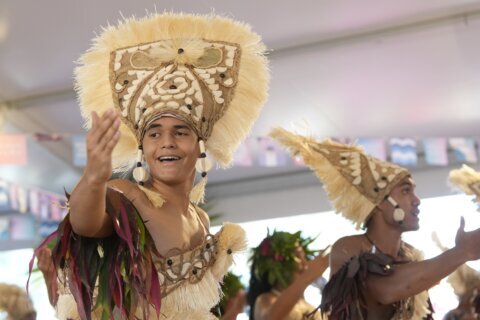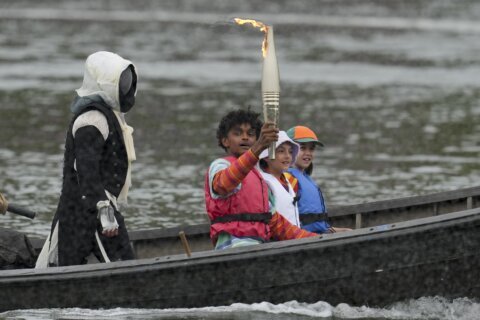BUCHAREST, Romania (AP) — The Romanian capital of Bucharest boasts a perfect location for Halloween festivities — and visitors love it.
More than 80,000 people descended last weekend on Bucharest’s Insula Ingerilor, or Angels’ Island peninsula, for the three-day West Side Hallo Fest, the largest Halloween festival in the Eastern European nation since the fall of communism.
The venue was carefully chosen. Both the Angels’ Island and the surrounding Lacul Morii lake have been shrouded in mystery stories ever since the lake was artificially created in the late 1980s.
When the lake was created, hundreds of homes, two schools and a church had to be demolished, along with a cemetery. Authorities moved about 11,000 graves, but left many others behind, feeding spooky tales of lost souls, wandering ghosts and strange lights appearing at night.
The area around the lake remained deserted for years and later became a popular recreation area for Bucharest residents. But its reputation of eerie mystery stayed on, fully coming to life last weekend.
Organizers brought in 18.5 tons of pumpkins and more than 2,300 hay bales, along with decorations by renowned Romanian floral designer Nicu Bocancea.
Human skeleton models, monster masks, skulls and cotton-made spider webs were part of a horror-movie-like setting where visitors indulged in the spooky atmosphere.
Children seemed to enjoy the event more than anyone else. They could be seen dressed in costumes and wearing monster-like makeup, dancing or happily taking photos with scary creatures.
One young woman held up a make-shift head on a pole while wearing a seemingly blood-stained shirt.
Some visitors dressed up as the world’s best-known vampire, Bram Stoker’s Dracula, inspired by a Romanian medieval prince and the Bran Castle, north of Bucharest, another popular Halloween tourist destination.
Halloween was virtually unknown in Romania before the fall of communism in 1989. It has since become increasingly popular with Romanians of all ages, despite opposition from Romania’s Orthodox Christian church, which in the past has dismissed the festivity as a “commercial sensation, foreign to Romanian culture, faith and spirituality.”
___
Associated Press writer Jovana Gec in Belgrade, Serbia, contributed to this report.
Copyright © 2024 The Associated Press. All rights reserved. This material may not be published, broadcast, written or redistributed.







